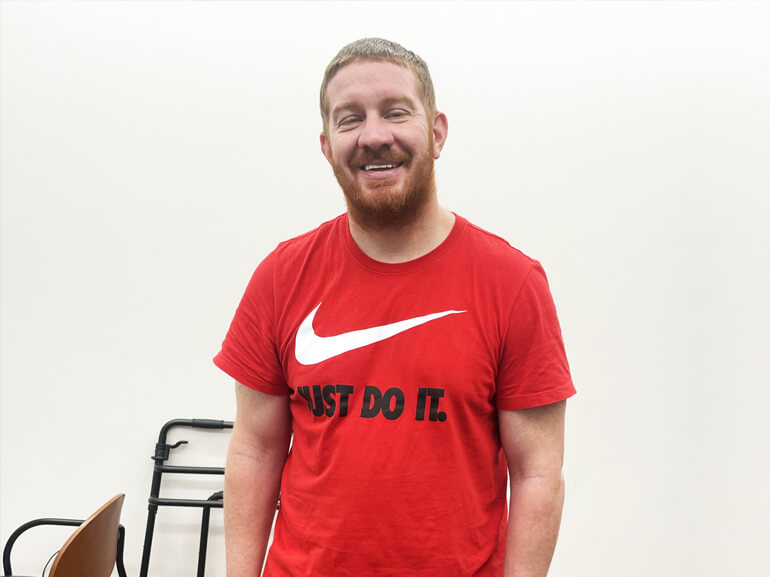Paul's Story

Paul Tatum, originally from New Orleans, loved working out and listening to music. However, those activities came to an abrupt halt when the 41-year old was found unconscious by his girlfriend. Quick action from EMS personnel, who initiated CPR, saved his life.
An MRI later revealed brain damage that was determined to be because of a drug overdose. Paul’s hospital course was prolonged due to complications with seizures, irregular heartbeat and urinary tract infections. After stabilizing, Paul admitted to Ochsner Rehabilitation Hospital to reclaim his life. Upon arrival at Ochsner, his interdisciplinary rehabilitation team put a treatment plan in place. One of the significant hurdles Paul faced was aphasia, a communication disorder caused by brain damage. Paul also had severe difficulty with his memory, problem solving and reasoning skills. His speech therapists targeted his communication and cognitive deficits with exercises and games, naming objects and answering simple questions.
Due to mild weakness in his face, Paul spoke with low intensity and was often unclear. His speech therapist directed Paul to practice speaking with careful articulation and a more pronounced volume. Paul gradually regained his ability to understand others and express himself, showing tremendous improvements in his memory and problem solving skills as well.
Although Paul was physically strong and able to stand up and walk, he had difficulty with visual-spatial perception issues, balance and following directions due to his brain injury. In physical therapy, Paul worked on improving his balance, walking and safety awareness. Paul’s determination played a pivotal role in his physical recovery.
As his walking improved, he began jogging on a treadmill equipped with a body weight support system to prevent falls. Jogging enabled Paul to elevate his heart rate appropriately in order to improve blood flow to his brain and increase neuroplasticity which is the brain’s ability to rewire and reconnect neurons to create new pathways in non-injured areas of the brain.
Weight training, a passion of his, became a part of his therapy, aiding in balance and motor skill improvement. A few weeks into his therapy sessions, Paul’s team added structured cognitive tasks during walking to improve his dual-tasking abilities. His physical therapists also used the virtual reality system to challenge his cognition, manage stimuli levels and improve his upper body coordination. When Paul returned home, he was independent for all walking and transfer tasks, only requiring supervision for navigating stairs.
Initially requiring maximal assistance, Paul progressed through his occupational therapy sessions to achieve independence in activities of daily living including dressing, toileting, bathing and transfers.
Encouraged by his dedicated rehabilitation team, he found strength in activities he enjoyed. Weight lifting and running on the treadmill provided not only physical benefits but also a renewed sense of hope. Most importantly, he eagerly anticipated reuniting with his son upon discharge.
Reflecting on his rehabilitation experience, Paul rated it a perfect “ten out of ten.” When asked what he learned from this ordeal, he offered this emotional testimonial, stating, “There is more to life than drugs. They’re not worth it.”